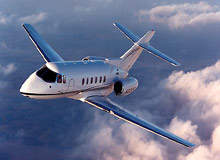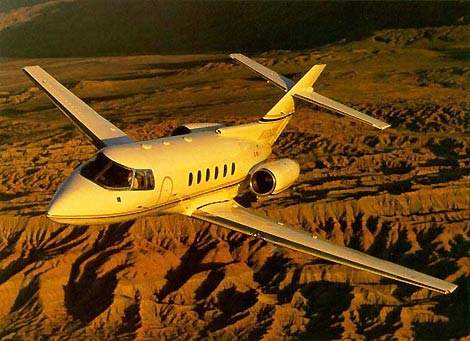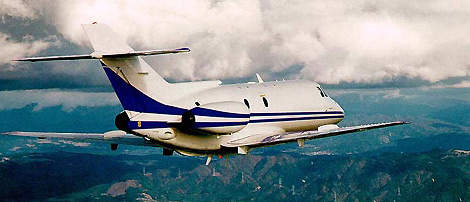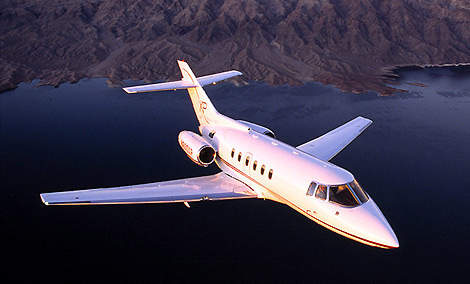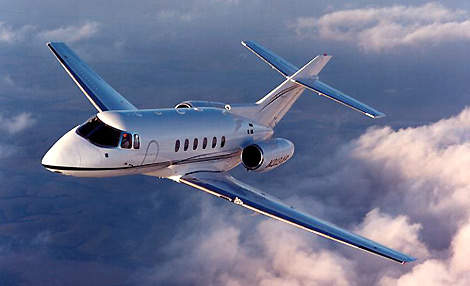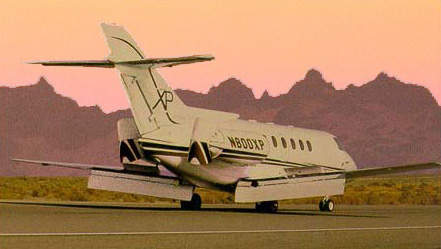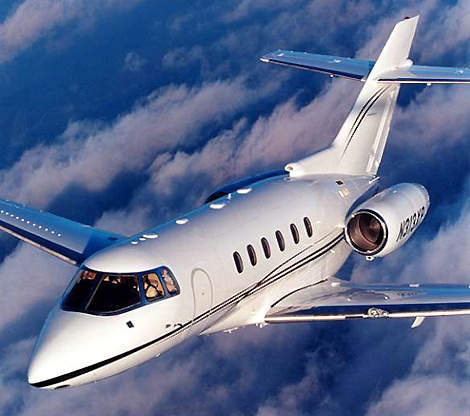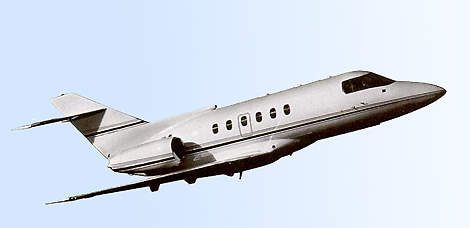The launch of the Raytheon Hawker 800XP extended performance mid-size business jet was announced in 1995. The aircraft is in service both as a business / VIP jet and also in special mission versions. The XP features uprated engine, enhanced aerodynamics, increased weight and system upgrades.
In December 2006, Raytheon announced the sale of Raytheon Aircraft to GS Capital Partners. The new company is called Hawker Beechcraft Inc and the sale was completed in March 2007.
The Hawker 800XP business jet is derived from the design of the UK-built de Havilland / Hawker Siddely and British Aerospace 125, first built in 1962, which evolved into the Series 400 to 800 produced up to the early 1990s. Raytheon purchased the Series 800 program in 1993 and the aircraft took the name Hawker 800.
Over 275 of the Hawker 800 were built until final production in 1995 when the 800XP entered service.
The largest fleet of Hawkers is run by NetJets, the fractional aircraft ownership programme run by Executive Jet. NetJets has 100 Hawker XP aircraft including 27 800XP. A number of Hawker 800XP are in the fleet of Raytheon’s fractional ownership company, Flight Options LLC (formerly Raytheon Travel Air), along with Beechjet 400A and KingAir B200 aircraft.
A Hawker 800XP is in operation in China, providing medical evacuation services for International SOS.
In November 2005, Raytheon introduced the Hawker 850XP, a successor to the Hawker 800XPi. The aircraft has composite, outwardly canted winglets, a range increased by 4% (an additional 185km) and 8% improvement in time to climb. The 850XP has the same Rockwell Collins Pro Line 21 avionics Airshow 21 cabin management system as the 800XPi. The Hawker 850XP received certification in March 2006 and is the current production model, superseding the 800XP.
Special mission variants
The Hawker 800FI is a flight inspection variant carrying the designation C-29A for the United States Air Force and U-125 for the Japan Air Self Defence Force. The United States Air Force received six C-29 aircraft for C-FIN (Combat Flight Inspection and Navigation) missions. The aircraft, equipped with LTV inspection systems, have been transferred to the Federal Aviation Authority for flight inspection operations worldwide.
The Japan Air Self Defence Force operates the U-125 for flight inspection missions by the Hiko Tenkentai forces based at Iruma.
Design
The Hawker 800XP is of all-metal construction with low sweptback one-piece wings, a high tailplane and rear-mounted engines. The leading edges of the wings and tailplane are fitted with a TKS liquid de-icing and anti-icing system.
BAE Systems Aerostructures supplies the doors, fuel tanks, flaps and elevators, and from September 2004, the rudder and tailplane assemblies.
Flight deck
The flight deck of the Hawker 800XP accommodates two crew with a third seat for an observer or crew member. The windscreen is fitted with an electrical anti-icing system.
Since 2002, the Hawker 800XP has been equipped with the Rockwell Collins Pro Line 21 avionics suite. The suite includes four 10in x 8in active matrix liquid crystal displays, dual FMS 6000 flight management system, digital autopilot, GPS-4000A global positioning system, TCAS 4000 traffic alert and collision avoidance system, TWR 850 turbulence-detection weather radar system, Terrain Awareness Warning System (TAWS) and dual Attitude Heading Reference System (AHRS) that uses a digital quartz gyro. Honeywell Mark V Enhanced Ground Proximity Warning System (EGPWS) is also fitted.
In May 2005, Raytheon introduced the Hawker XPi with upgraded avionics, including the Rockwell Collins IFIS-5000 integrated flight information system and Pro Line 21 Communication, Navigation and Surveillance (CNS) suite fitted as standard.
IFIS includes dual graphical multi-function displays, electronic charts, enhanced map overlays and optional 3D flight management system mapping, paperless cockpit and real-time graphical cockpit weather.
Cabin
The 17.1m³ (604ft³) cabin can accommodate up to 14 seats, with typical seating layouts for six to ten passengers in a variety of configurations. A VIP cabin layout provides seating for eight passengers with four club seats at the front of the cabin, a
three-seat settee and a single seat at the rear of the cabin. The luggage compartment is accessible in flight.
In 1999, Raytheon restyled the interior: the interior window frames were restyled from square to oval, passenger seats were restyled and retailored, sidewall lighting was added and the side panel worktables were redesigned for easier access.
As part of the Hawker 800XPi upgrade, the cabin has been restyled to provide more baggage space, LED cabin lighting and the Rockwell Collins Airshow 21 cabin management system which now includes LCD touchscreens at each chair for the individual control of lighting, temperature and entertainment systems.
Engines
The aircraft is powered by two rear-mounted Honeywell TFE731-5BR-1H turbofan engines each rated at 20.73kN. The engines, fitted with Dee Howard thrust reversers, are mounted in Northrop Grumman pods on either side of the rear fuselage. The engines are
fitted with BCF engine fire extinguishers and engine bleed air ice protection.
The aircraft has integral fuel tans in the wings and a rear underfuselage tank, of total capacity 5,700l.
Landing gear
The aircraft is equipped with twin-wheeled hydraulically retractable tricycle-type landing gear.
The landing gear is fitted with Dunlop wheels, Dunlop triple disc hydraulically operated brakes and a Maxaret anti-skid system. The main gear retracts
inward into the wings and the nose unit retracts forward.

